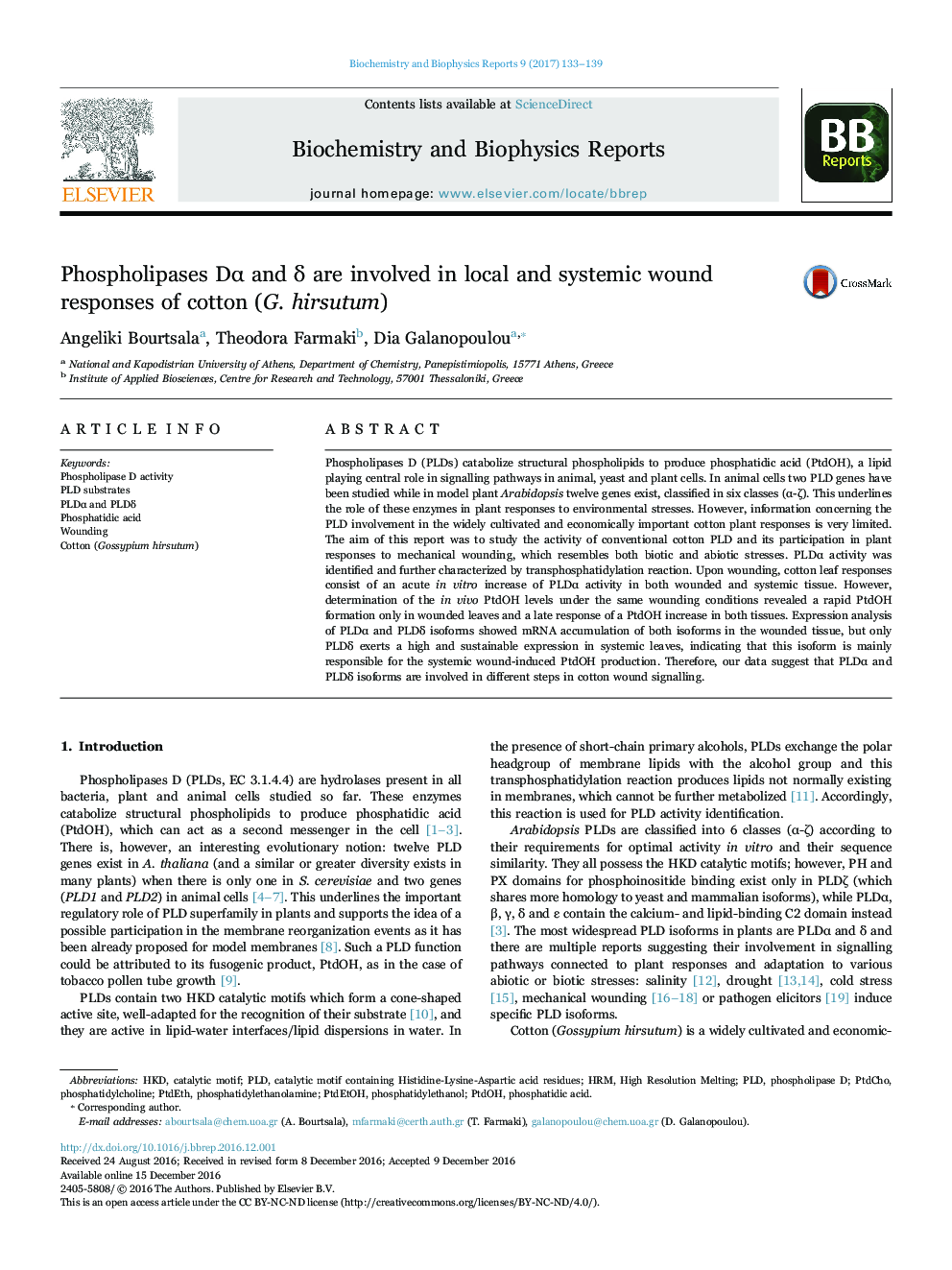| Article ID | Journal | Published Year | Pages | File Type |
|---|---|---|---|---|
| 5507086 | Biochemistry and Biophysics Reports | 2017 | 7 Pages |
â¢PLDα activity and PtdOH levels rapidly increase in wounded cotton leaves.â¢PLDα is also activated rapidly in systemic tissue.â¢Doubling of PtdOH levels occurs as a late response in both wounded and systemic tissue.â¢PLDδ (but not PLDα) exerts a high and sustainable expression in systemic leaves.â¢PLDα and PLDδ are involved in different steps in cotton wound signalling.
Phospholipases D (PLDs) catabolize structural phospholipids to produce phosphatidic acid (PtdOH), a lipid playing central role in signalling pathways in animal, yeast and plant cells. In animal cells two PLD genes have been studied while in model plant Arabidopsis twelve genes exist, classified in six classes (α-ζ). This underlines the role of these enzymes in plant responses to environmental stresses. However, information concerning the PLD involvement in the widely cultivated and economically important cotton plant responses is very limited. The aim of this report was to study the activity of conventional cotton PLD and its participation in plant responses to mechanical wounding, which resembles both biotic and abiotic stresses. PLDα activity was identified and further characterized by transphosphatidylation reaction. Upon wounding, cotton leaf responses consist of an acute in vitro increase of PLDα activity in both wounded and systemic tissue. However, determination of the in vivo PtdOH levels under the same wounding conditions revealed a rapid PtdOH formation only in wounded leaves and a late response of a PtdOH increase in both tissues. Îxpression analysis of PLDα and PLDδ isoforms showed mRNA accumulation of both isoforms in the wounded tissue, but only PLDδ exerts a high and sustainable expression in systemic leaves, indicating that this isoform is mainly responsible for the systemic wound-induced PtdOH production. Therefore, our data suggest that PLDα and PLDδ isoforms are involved in different steps in cotton wound signalling.
